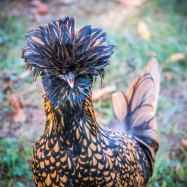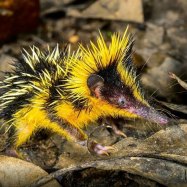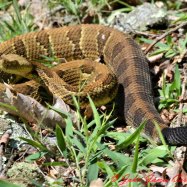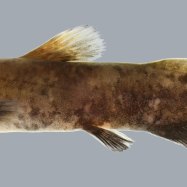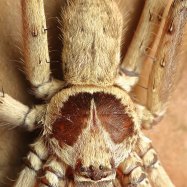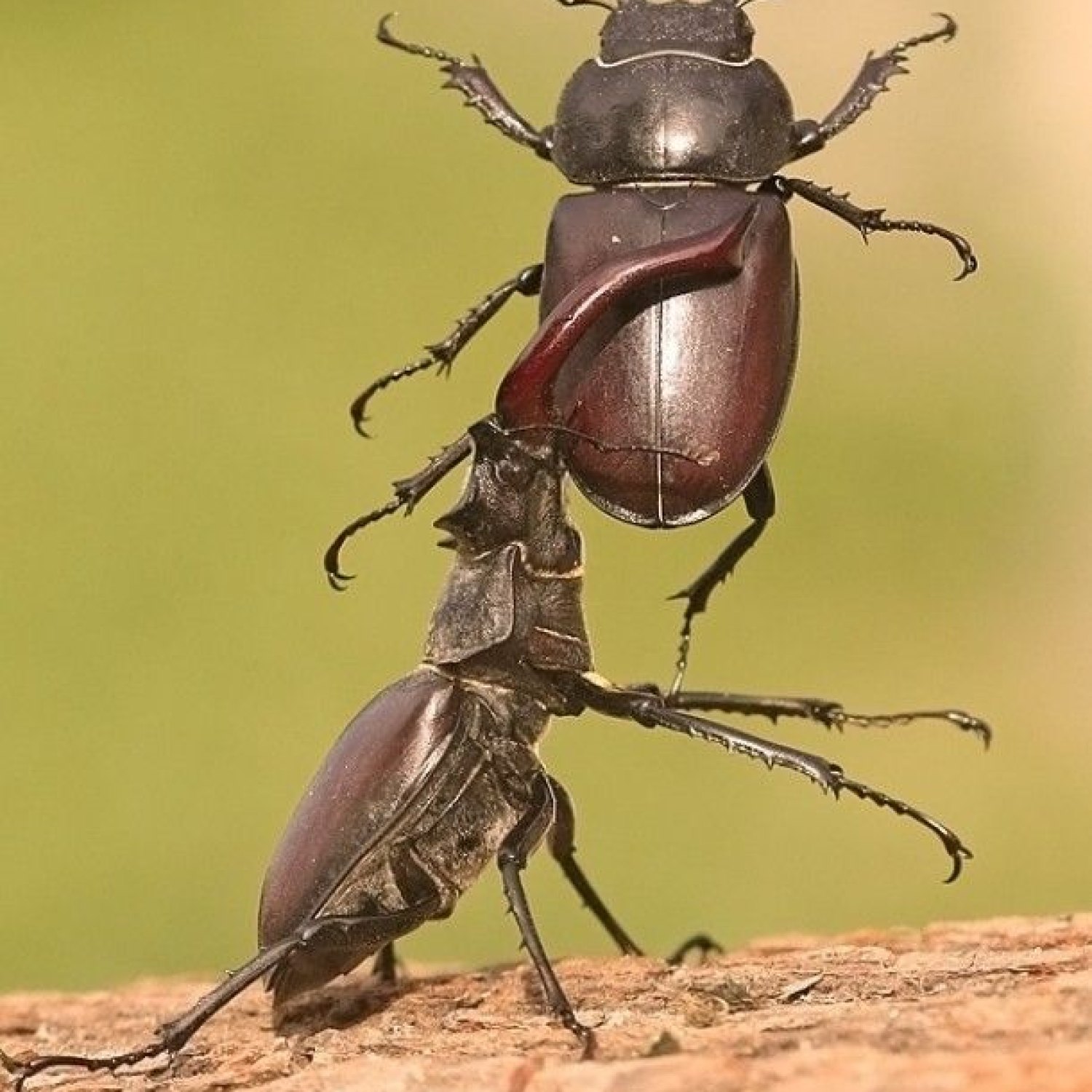
Stag Beetle
3 - 7 centimeters
The Stag Beetle, found in woodlands, parks, and gardens, is a large, elongated insect with a body length of 3-7 centimeters. Belonging to the Lucanidae family, these beetles are popular for their impressive antler-like mouthparts and unique body shape. These fascinating creatures are an essential part of our ecosystem and can be spotted easily during warm summer evenings. #StagBeetle #Lucanidae #insects
Animal Details Summary:
Common Name: Stag Beetle
Kingdom: Animalia
Habitat: Deciduous forests
A Wonder of Nature: The Fascinating Stag Beetle
Nature is full of incredible creatures that never cease to amaze us. From the depths of the ocean to the highest mountain peaks, every corner of our planet holds countless wonders. One such wonder is the stag beetle – a fascinating insect that has captured the attention of nature lovers and scientists alike.The stag beetle, also known by its scientific name Lucanus cervus, is a member of the animal kingdom Stag Beetle. It belongs to the phylum Arthropoda and the class Insecta, making it one of the many species of insects found on our planet. Its distinctive features and behaviors have earned it a place in the order Coleoptera and the family Lucanidae, which is comprised of over 1,200 species of beetles.
Found in the deciduous forests of Europe and parts of Asia, the stag beetle is a truly remarkable creature. Let's take a closer look at this amazing insect and discover what makes it so unique and special.
The Physical Characteristics of the Stag Beetle
The stag beetle is a large and elongated insect, with a body length ranging from 3 to 7 centimeters. Its most distinctive feature is its large mandibles, which resemble the antlers of a stag, hence its name. These mandibles are used for fighting and mating, and they are also used to move objects and dig burrows.The body of the stag beetle is generally dark brown to black in color, with some species having a metallic sheen. The males are larger and more robust than the females, and they have longer mandibles, making them more striking in appearance Scarab Beetle.
Like most insects, the stag beetle has three main body parts – the head, the thorax, and the abdomen. The head houses its compound eyes, antennae, and mouthparts, which it uses for eating and sensing its surroundings. The thorax is where the beetle's six legs and powerful wings are found. These wings are not just for show – they allow the beetle to fly with speed and agility, making it an expert at escaping predators.
Life in the Habitat of the Stag Beetle
The stag beetle is a widespread species, with a geographical distribution that includes various countries in Europe and Asia. In these regions, it can be found in woodlands, parks, and gardens, where it thrives in the natural environment of deciduous forests.These insects are crepuscular, meaning they are most active at dawn and dusk. They are also more active during the summer months, when they can be seen flying around searching for food and mates. The stag beetle is also an omnivorous species, meaning it feeds on a variety of foods such as fruits, sap, and small insects.
However, despite its large size and impressive mandibles, the stag beetle is not a threat to humans. In fact, it is a harmless creature and plays an essential role in the ecosystem by aiding in the decomposition of dead wood and providing a food source for other animals.
The Fascinating Courtship Behavior of the Stag Beetle
Mating is the highlight of the stag beetle's life, and it comes with some fascinating behaviors. When it's time to mate, the male stag beetle uses its impressive mandibles to fight off other males vying for the same female. It's a fierce and intense competition, and the strongest male usually wins the right to mate.But what's even more intriguing is the courtship ritual between the male and female stag beetle. Once they have mated, the female may lay up to 100 eggs in rotting logs or tree stumps. These eggs will hatch into larvae after a few weeks, and the larvae will spend the next 3-5 years developing into adults.
During this time, the larvae feed on decaying wood and grow into their large size, preparing for their transformation into an adult stag beetle. The transformation process, known as metamorphosis, is a fascinating phenomenon that allows the larvae to change into a completely different-looking insect.
Threats to the Stag Beetle
Despite its impressive size and strength, the stag beetle faces various threats in its natural habitat. Habitat loss due to deforestation and urbanization is a major concern for this insect. With the decline of deciduous forests, stag beetles are losing their homes and sources of food, making it harder for them to survive and reproduce.Additionally, the use of pesticides and insecticides in crops can also harm or kill stag beetles and other beneficial insects. It's crucial for us to be mindful of the impact our actions have on the environment and the creatures that call it home.
In Conclusion
The stag beetle is a wonder of nature that holds a special place in the hearts of many nature enthusiasts. Its unique physical features, fascinating behaviors, and crucial role in the ecosystem make it a truly remarkable insect.As we continue to expand and develop, it's important to remember the importance of preserving the natural habitats of creatures like the stag beetle. By doing so, we can ensure that these magnificent insects continue to thrive and fascinate us for generations to come. So let's continue to appreciate and protect the wonder of nature that is the stag beetle.

Stag Beetle
Animal Details Stag Beetle - Scientific Name: Lucanus cervus
- Category: Animals S
- Scientific Name: Lucanus cervus
- Common Name: Stag Beetle
- Kingdom: Animalia
- Phylum: Arthropoda
- Class: Insecta
- Order: Coleoptera
- Family: Lucanidae
- Habitat: Deciduous forests
- Feeding Method: Omnivorous
- Geographical Distribution: Europe and parts of Asia
- Country of Origin: Various countries in Europe and Asia
- Location: Woodlands, parks, and gardens
- Animal Coloration: Dark brown to black
- Body Shape: Large, elongated
- Length: 3 - 7 centimeters
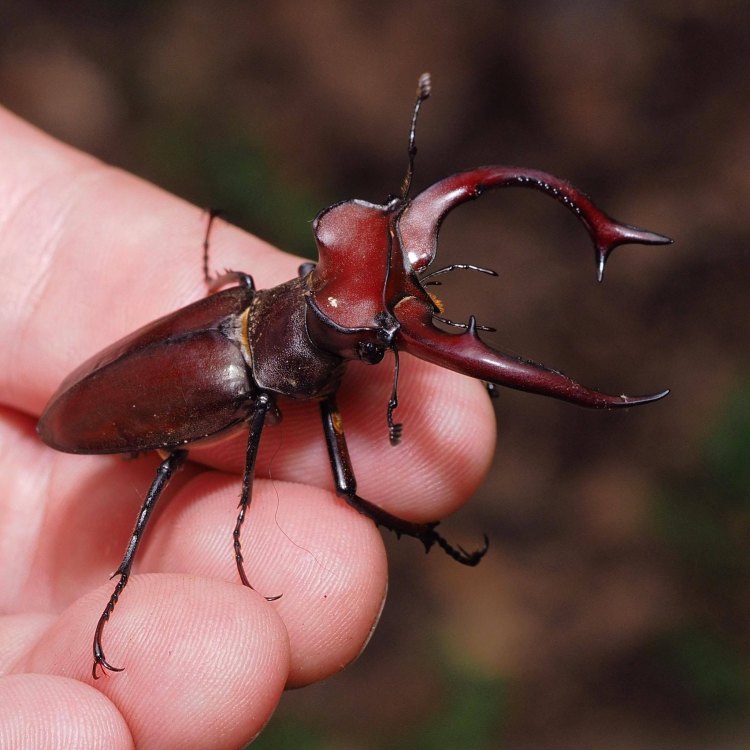
Stag Beetle
- Adult Size: Medium to large
- Average Lifespan: 1 - 5 years
- Reproduction: Sexual
- Reproductive Behavior: Males fight for mating rights
- Sound or Call: None
- Migration Pattern: Non-migratory
- Social Groups: Solitary
- Behavior: Nocturnal
- Threats: Habitat loss, pollution, climate change
- Conservation Status: Not evaluated (NE)
- Impact on Ecosystem: Play a role in decomposition
- Human Use: None
- Distinctive Features: Pincer-like jaws in males
- Interesting Facts: Males have large, antler-like jaws used for fighting
- Predator: Birds, mammals, other insects
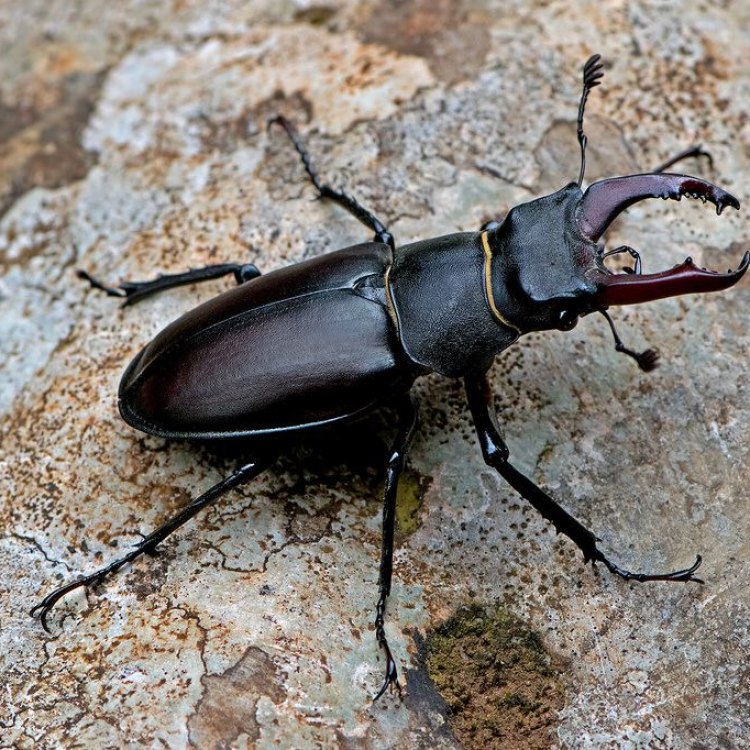
Lucanus cervus
The Mighty Stag Beetle: Fascinating Facts and Importance to Our Ecosystem
In the world of insects, there are some creatures that capture our attention with their unique features. One such insect is the stag beetle. With its impressive size and distinctive antler-like pincers, the stag beetle is a fascinating species that has captured the interest of entomologists and nature enthusiasts alike.So, what exactly makes the stag beetle so special? Let’s delve deeper and discover the intriguing world of the stag beetle PeaceOfAnimals.Com.
Appearance and Lifecycle
Stag beetles belong to the family Lucanidae and are native to Europe, Asia, and parts of North America. They are medium to large in size, with some species reaching up to 3 inches in length. The males, in particular, have a striking appearance with their elaborate, pincer-like jaws. These jaws, also known as mandibles, are used for combat and attracting mates.The lifecycle of the stag beetle is quite unique. It starts off as an egg, which is laid underground by the female beetle. The larvae then emerge, and they spend the next few years growing and developing in decaying wood. This process can take anywhere from 3 to 7 years, depending on the species and environmental conditions. Once fully grown, the larvae pupate and eventually emerge as adult stag beetles Shepkita.
Social Behavior and Reproduction
Stag beetles are solitary insects, meaning they do not live in social groups. As adults, they spend most of their time roaming and feeding at night. This is because stag beetles are nocturnal creatures and are most active in the dark. They are also non-migratory, meaning they do not travel long distances like some other insect species.When it comes to reproduction, stag beetles have a unique mating behavior. During the breeding season, male stag beetles will engage in fierce battles with each other to win the right to mate with a female. These fights can be quite intense, with males using their large jaws to pin down their opponents. The winning male will then mate with the female and guard her until she lays her eggs.
Threats and Conservation Status
Like many other species, stag beetles face numerous threats to their survival. Habitat loss due to human development is one of the biggest threats facing stag beetles. As they rely on decaying wood for their lifecycle, any disruption to their habitat can significantly impact their population. Pollution and climate change are also major threats, as they can directly affect the quality of the decaying wood that stag beetles rely on.Due to these threats, the conservation status of stag beetles has been designated as "Not Evaluated" (NE) by The International Union for Conservation of Nature (IUCN). This means that not enough data is available to assess the population trends of this species. However, many efforts are being made to protect their habitats and raise awareness about their importance to our ecosystem.
Impact on Ecosystem
While stag beetles may not seem like the most significant species in our ecosystem, they actually play a vital role. As larvae, they feed on decaying wood, aiding in the process of decomposition. This, in turn, helps to recycle nutrients back into the soil, promoting healthy plant growth. Furthermore, as adults, stag beetles are a source of food for many other animals, including birds, mammals, and other insects.Interesting Facts
Apart from their impressive pincers and unique behavior, here are some other interesting facts about stag beetles:- Stag beetles are not strong fliers and are often seen crawling on the ground or in low vegetation.
- The male stag beetle's jaws can grow up to twice their body size.
- The scientific name Lucanus cervus was inspired by the Roman god Lucanus, who was often depicted wearing stag antlers.
- In Japan, stag beetles are considered a symbol of courage and strength.
- Stag beetles are often kept as pets in some parts of the world.
In Conclusion
The stag beetle may not be as well-known as some other insect species, but it is undoubtedly a remarkable creature. With its distinctive appearance, unique mating behavior, and crucial role in our ecosystem, the stag beetle is a species worth appreciating and protecting.As humans, we have a responsibility to take care of our environment and preserve the diversity of species that call it home. By understanding and appreciating creatures like the stag beetle, we can take small steps towards creating a healthier and more sustainable planet for all living beings.
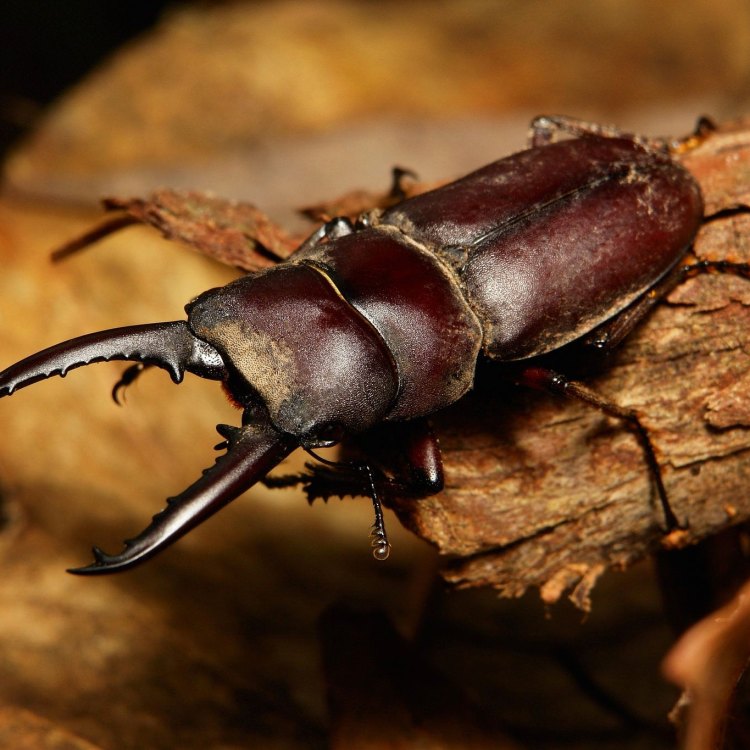
A Wonder of Nature: The Fascinating Stag Beetle
Disclaimer: The content provided is for informational purposes only. We cannot guarantee the accuracy of the information on this page 100%. All information provided here may change without prior notice.

